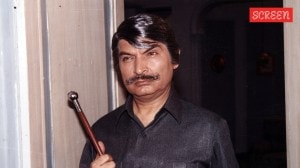The siege of Koraput
The Naxal siege of a small sleepy Orissa town on Friday carries a dark symbolism. With elections drawing nearer, the attack holds dangerous ...

The Naxal siege of a small sleepy Orissa town on Friday carries a dark symbolism. With elections drawing nearer, the attack holds dangerous portends for the future. Unprecedented as it was, the routine knee-jerk reaction of the administration to the mayhem was even more shocking.
The Naxalites came in waves, took siege of Koraput town and looted the police armoury. It was an attack launched with clinical precision. The town was under siege for about an hour, as armed radicals — who numbered around 500 — stood guard at all the entry routes to stop police movement. And when a CRPF convoy moved out late in the night, it was led into the trap. One of the four vehicles was blown up in landmines, killing three jawans. To date, there is no official confirmation about the quantum of arms and ammunition looted from the reserve police armoury. Unconfirmed reports had spoken of an imminent Naxal attack the day before. This intelligence failure only points to the lack of operational readiness of the forces deployed here.
From time to time, the radicals have got away after inflicting serious attacks on the police force and hundreds of policemen have been killed over the decades. The state government has done nothing substantial to modernise the police force deployed in the danger zone nor evinced a strong political will to take on the growing extremism. Going by the ritualised jargon that marks the statements of the Naveen Patnaik government, Naxalism seems to be considered as more of a law and order problem rather than a symptom of a serious socio-economic malaise. The government has failed to appreciate why the tribals in the area are drawn more to the ‘Annas’ than the men in khaki.
Way back in the nineties, the southern belt of Orissa was construed as the “safe corridor” by Left wing ultras. The vast stretch of forest touches Andhra Pradesh on one side and Chhattisgarh on the other. Years later, the outfit would even declare the zone as “liberated”. Despite this, the state government has never attempted a clear-cut policy to address the issue and now luck seems to have run out on it. Such a policy ought to be two-pronged. On the one hand, the police force should be equipped and trained to repulse such attacks and keep the radicals on the run, even as local communities are won over through effective social welfare interventions, on the other. To the tribals, it is the policeman who is the outsider.



- 01
- 02
- 03
- 04
- 05



























